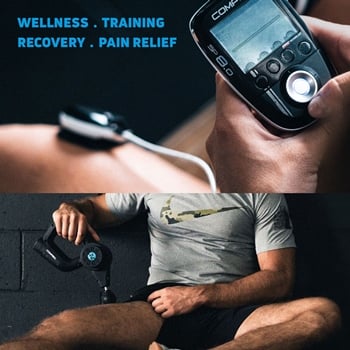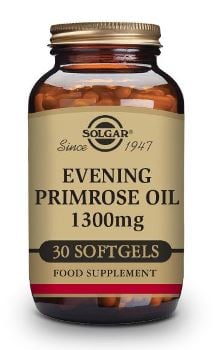-
Free Delivery - For orders over £60 & selected items
our blog post
Which is Better for Me: a Knee Brace or a Knee Compression Sleeve?
Which is Better for Me: a Knee Brace or a Knee Compression Sleeve?
We receive many questions which knee brace or support is the best choice from the various types that are available.
There are several types of knee braces that provide stability, support, and pain relief. We recommend that you discuss with your doctor or MSK Therapist which type would offer you the most benefit.
Types of Knee Braces
Support braces are constructed of bars, hinges, and velcro straps and are designed to protect the knee from damage that can occur during sports such as football, skiing and water sports. More specifically, they are intended to help prevent injury to the Ligaments and cartilage of the knee.
Functional braces are used after a knee injury and provide support while the knee injury is healing. The type of functional brace you need is determined by the type of injury you have. They are designed to improve the function of the knee when a particular ligament has been damaged and the normal knee function is impaired. An athlete with a partially ruptured Anterior Cruciate Ligament (ACL), for example, might be advised to wear a functional brace.
Rehabilitative knee braces are designed to limit movement of the knee while it is healing after an injury or surgery. They can protect injured ligaments and control knee movement during rehabilitation for an injured ACL, MCL, or meniscus. These knee braces are typically used for only two to eight weeks while using crutches immediately after an injury or surgery.
Unloader braces are usually prescribed for people who have medial (inner part of the knee) or lateral (outer part of the knee) compartment osteo-arthritis. These knee braces unload stress from the affected joint by placing pressure on the opposite side of the knee. This forces the knee to bend away from the painful area.
Knee sleeves, while not technically a brace, are the most common type of knee support worn by the average athlete and more casual exerciser. They provide compression around the knee joint and offer support for the entire knee, including all of the tendons, ligaments and supporting structure of the knee.
Types Of Knee Injuries And When To Use Knee Compression Sleeves
When we approach knee injuries (not arthritis or inflammation of the knee), it is useful to think about how acute the injury is.
Acute Injuries
Injuries are considered to be in the acute phase immediately following & within the first few days of the injury . Acute injuries can benefit from Rest, Ice, Compression, Circulation and Elevation (RICCE). A ligament tear during that phase might be managed with a functional brace until surgery can be arranged. After a surgery, a knee compression sleeve might be advised to help reduce swelling and provide increased proprioception, which is the sensory information that contributes to the sense of position of self, and movement. A decrease in pain is often a benefit of these features.
Often an injury results in damage to the knee but does not cause a ruptured ligament. This type of injury is among the most common injuries seen in athletes and is related to the incredible forces placed on the knee either because of explosive or repetitive movements. The damage can occur to the knee meniscus as well as incomplete rupture of the ligaments, tendons and supporting structure of the knee. In all of these injuries, the acute phase management is the same with the recommended treatment of RICCE. For the compression component of this treatment, it is important to note that there are many options for knee compression sleeves available today.
While all knee supports may look similar, be assured they are not all created equal. When selecting knee compression sleeves, be sure to use comfort as a primary requirement. After all, if it is not comfortable, you will not wear it.
Body Helix knee compression sleeves are designed to be comfortable and can be worn during the acute phase to aid in acute injury management. We have positive reviews by physician advisers and customers alike for this indication.
Subacute Injuries
Injuries are considered “subacute” during the initial healing phase, and generally considered to be about six weeks. However, healing continues even after the six-week period and the healing will be longer with a more severe injury. Unloader and functional braces are of no benefit compared to comfortable compression during this phase of healing. A study shows that the use of a Body Helix-like compression brace worked just as well as a functional brace after surgical repair of an ACL rupture. A knee compression sleeve is advised during the subacute rehabilitation phase because it controls swelling, supports all the structures of the knee and increases proprioception.
These benefits are present for minor and major injuries, as well as during post-op recovery. Additional rehabilitation options include weight reduction, stretching, strengthening and balance training. Body Helix compression wraps can be worn comfortably while all range of motion activities are pursued.
Chronic Injuries and Injury Prevention
Braces for injury management during sports are not very common if the injury is severe enough to require an uncomfortable, activity-restricting device. In addition, the use of braces for injury prevention is an area of active research. However, knee compression sleeves have shown positive benefits for prevention of re-injury, pain reduction and improved proprioception. Comfort, no migration and no impairment of normal motion are all desirable features of a knee compression sleeve. Body Helix knee sleeves are designed with these goals in mind.
This information is not intended as medical advice or diagnosis. Please seek medical evaluation for pain that is severe, prolonged or worsening despite conservative measures.





